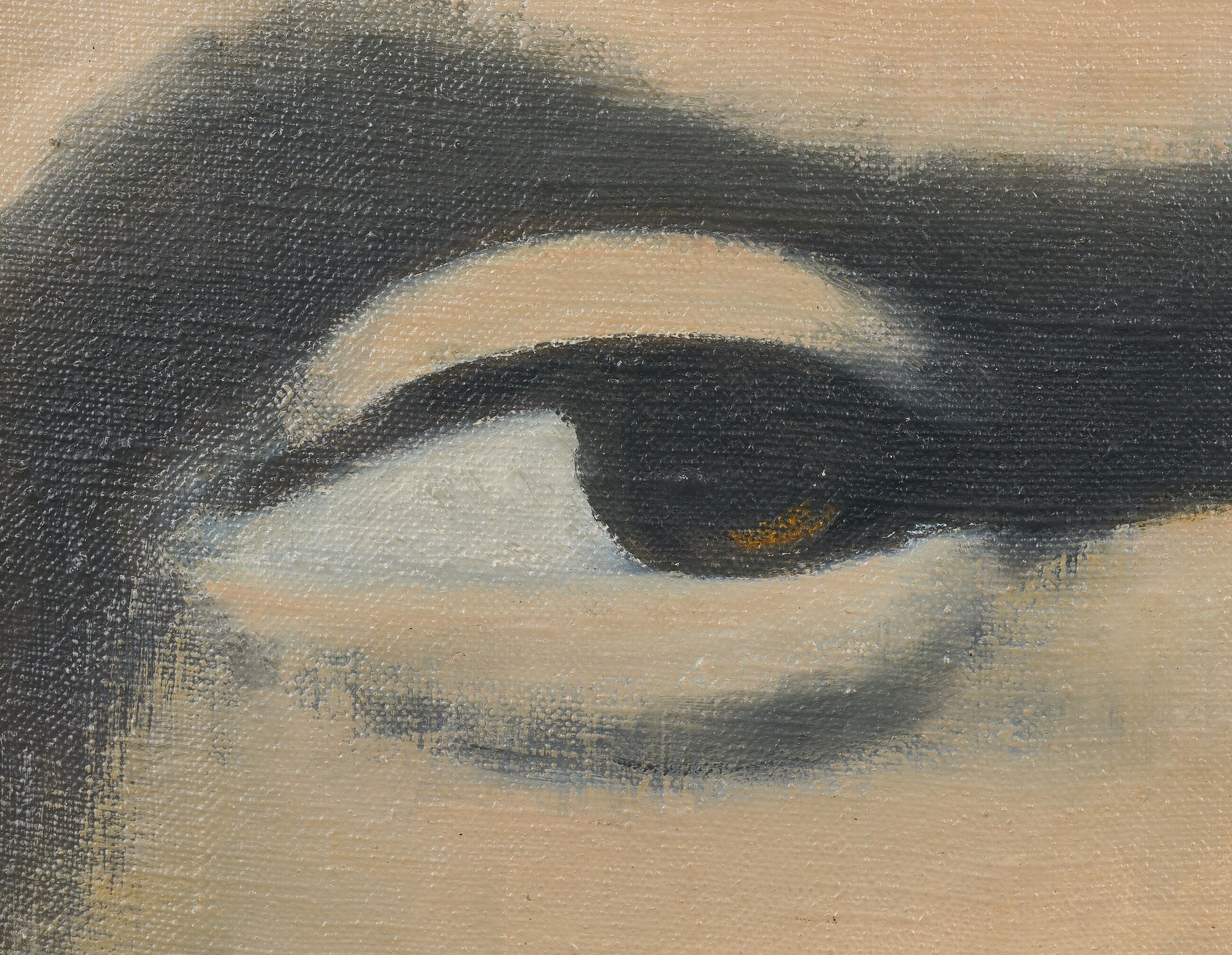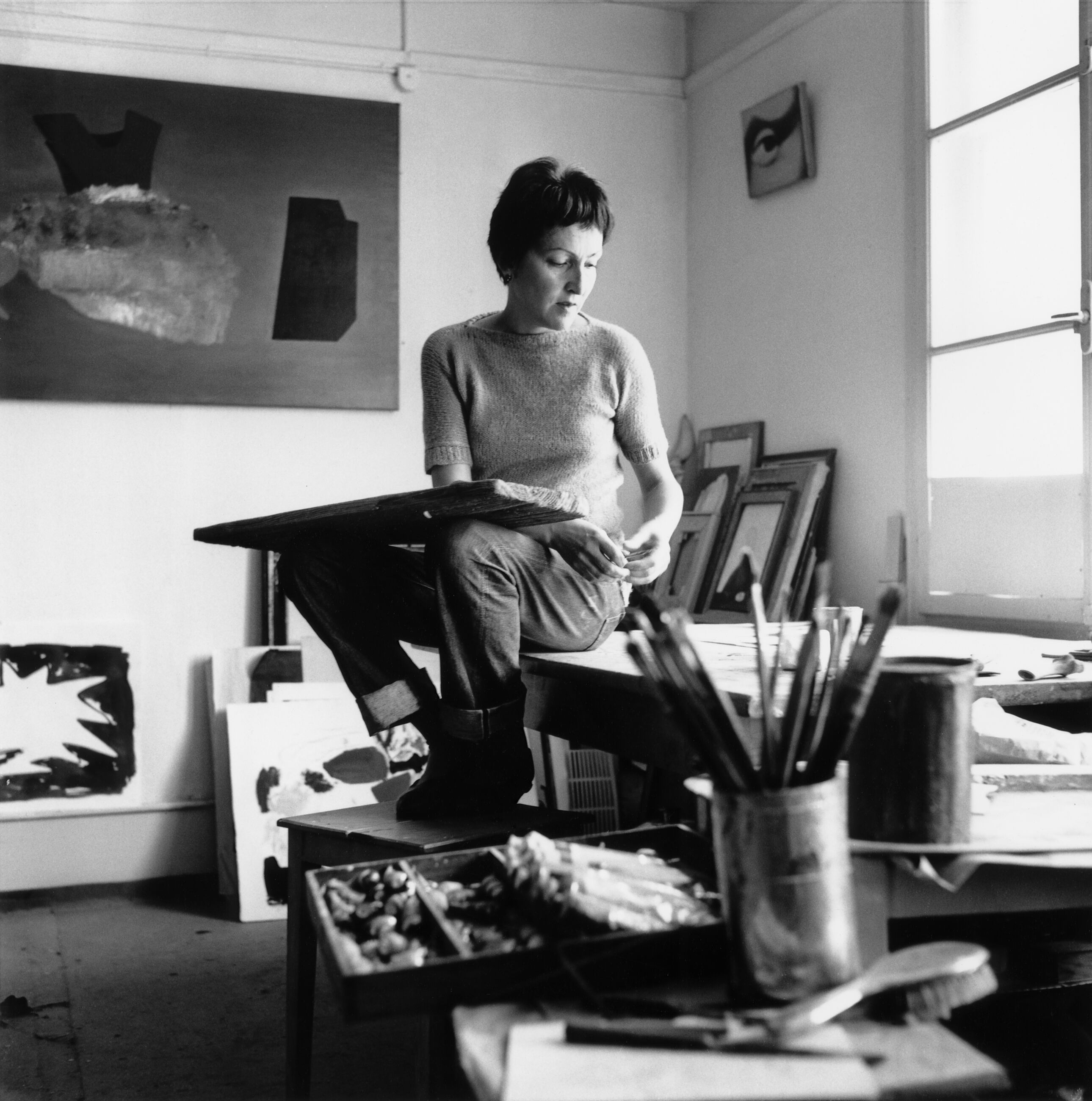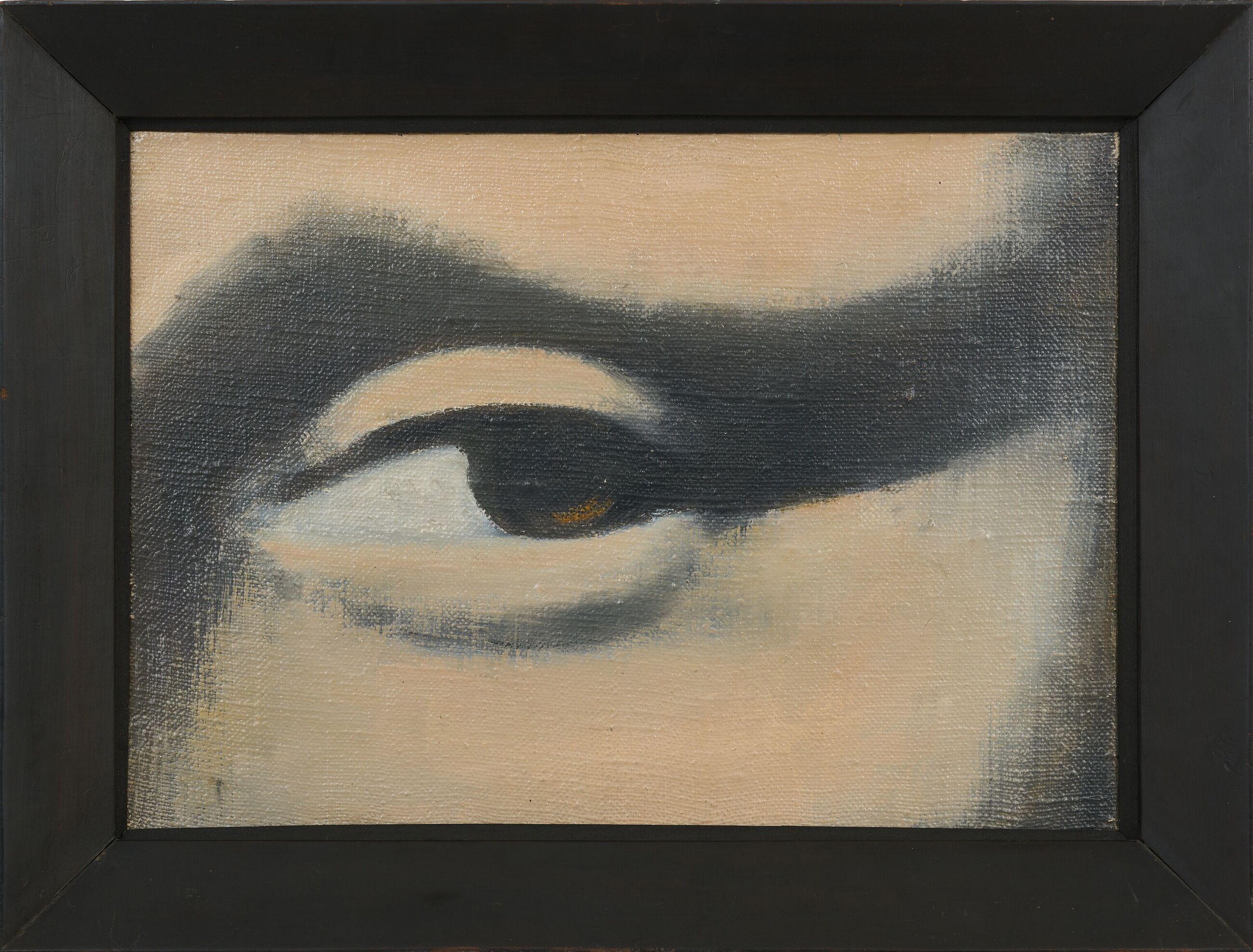Exhibited at important institutions including the Kunstmuseum Bern, Schirn Kunsthalle Frankfurt and the Louisiana Museum of Modern Art, Humlebaek, Meret Oppenheim’s late painting, ‘Das Auge der Mona Lisa’ (1967) exemplifies the artist’s subversive practice, transforming a familiar and iconic image into something uncanny, captivating, and powerfully autonomous.
1 / 4
Meret Oppenheim
Das Auge der Mona Lisa (The Eye of Mona Lisa)
- 1967
- Oil on canvas
- 23 x 32.1 cm / 9 x 12 5/8 in
Lisa Wenger, the niece of Meret Oppenheim, discusses ‘Das Auge der Mona Lisa (The Eye of Mona Lisa)’
Like Marcel Duchamp, a close friend from her time in 1930s Paris, Oppenheim turned to Leonardo da Vinci’s ‘Mona Lisa’ (c. 1503) as a springboard for reinterpretation. While Duchamp’s ‘L.H.O.O.Q.’ (1919) defaced a reproduction with a moustache to parody its canonical status, Oppenheim instead reframes the painting’s famously enigmatic gaze.

Detail of Marcel Duchamp’s ‘L.H.O.O.Q.’, (1919) originally published in ‘391,’ no. 12, March 1920 © Association Marcel Duchamp / ProLitteris, Zurich, 2025
Oppenheim’s tightly framed composition recalls Surrealist strategies of fragmentation and dislocation. A sweeping shadow arcs around the eye in masterful chiaroscuro, which verges on abstraction. This striking focal point contrasts with a muted palette of warm beiges, earthy browns, and soft greys, revealing a painterly language attuned to psychological intensity and formal experimentation.

‘The female eye is the subject, not so much the object.’
Lisa Wenger
Throughout art history, the eye has served as a symbol of perception, desire, and the unconscious, particularly in Surrealist works by artists such as Salvador Dalí, René Magritte, and Man Ray. Oppenheim departs from voyeuristic associations, isolating Mona Lisa’s eye as a standalone subject endowed with new agency.

By shielding Mona Lisa’s face, Oppenheim resists the tradition of casting one of Western art’s most recognizable figures as a passive symbol rather than a subject with volition. This approach reflects her broader interest in disguising and masking identity, offering a meditation on the charged, reciprocal act of looking.

On view in Basel
‘Das Auge der Mona Lisa (The Eye of Mona Lisa)’ is on view in our exhibition ‘Meret Oppenheim’ at Hauser & Wirth Basel until 19 July 2025.

Art Basel
We return to Art Basel this year with works by 20th-century masters including Philip Guston, Louise Bourgeois, Arshile Gorky and more, and contemporary highlights from artists Rashid Johnson, Jeffrey Gibson, Mark Bradford, Nairy Baghramian, Henry Taylor, Cindy Sherman, Nicole Eisenman and Roni Horn.
Artwork: Meret Oppenheim, Das Auge der Mona Lisa (The Eye of Mona Lisa), 1967 © 2025, ProLitteris, Zurich. Photo: Jon Etter; Portrait of Meret Oppenheim © Keystone / Peter Studer / Walter Studer; Philip Guston, Migration (detail), 1978 © The Estate of Philip Guston. Photo: Sarah Muehlbauer


